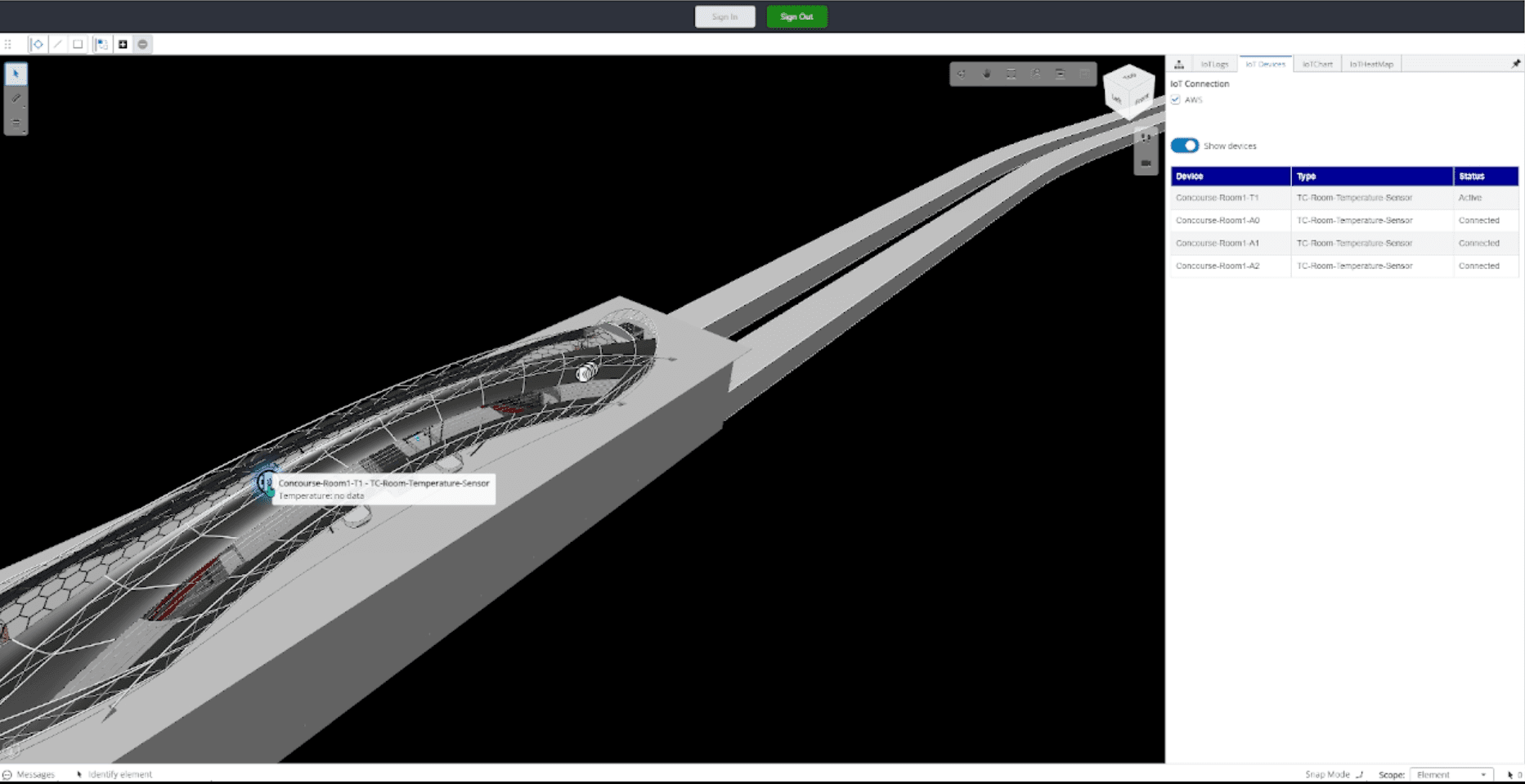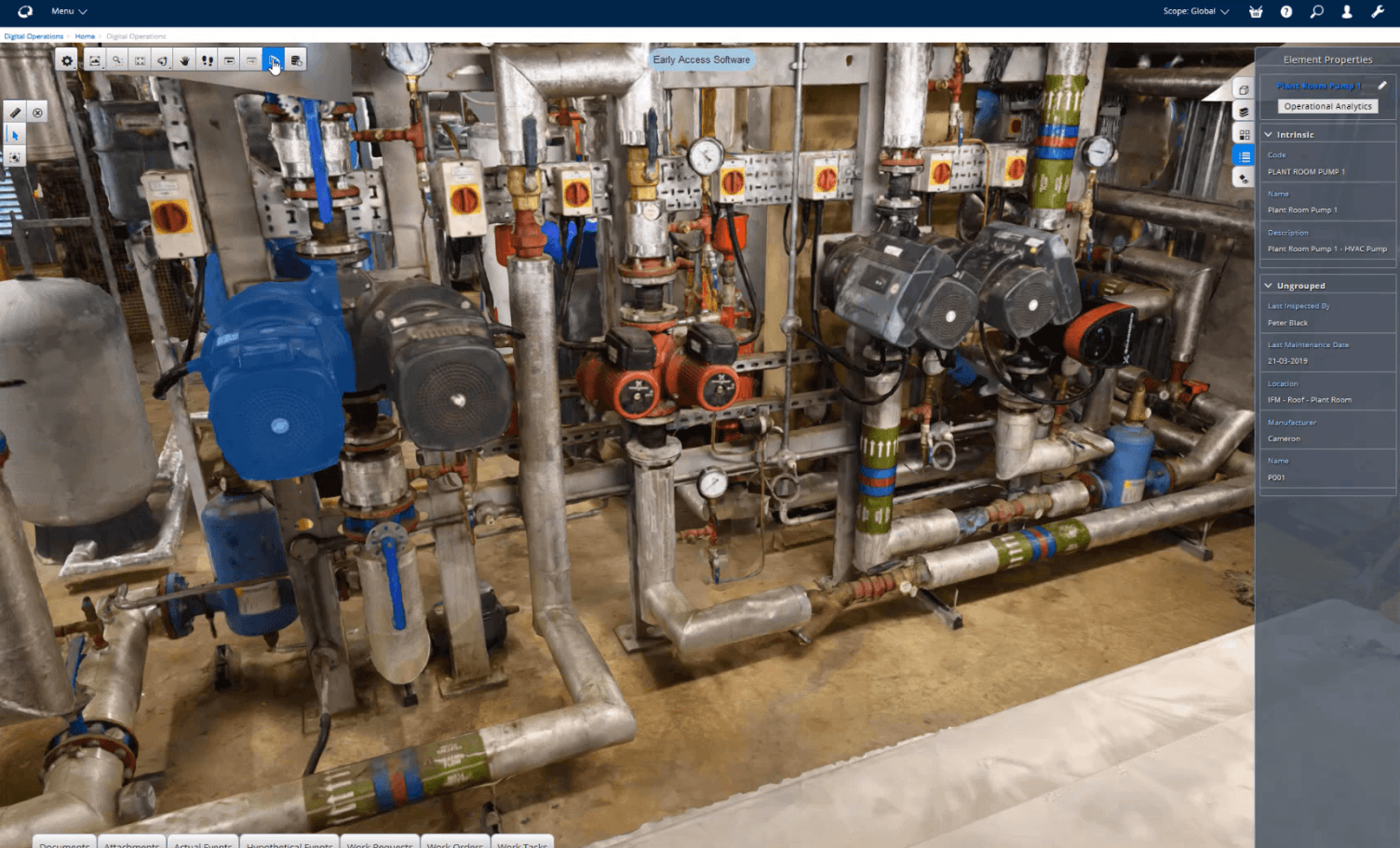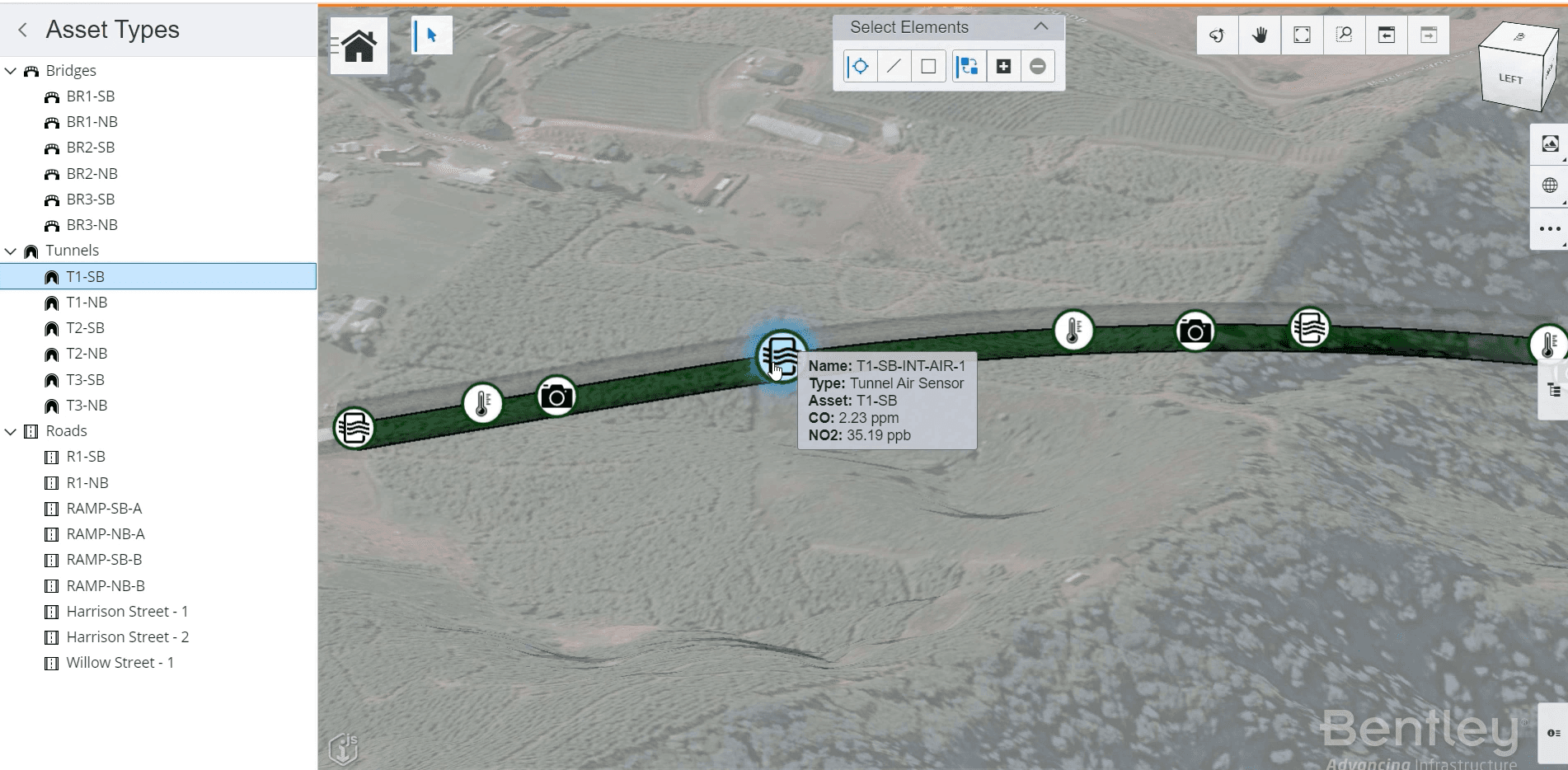- Published on
Benefits of Digital Twins | What it is and How to Get Started
In today’s built environment, digital twins are redefining how facilities are operated and maintained. While BIM provides the foundation for structured asset information, the real leap in value comes when that static model is extended into a living, breathing digital twin. This shift unlocks new opportunities to optimize performance, lower costs, and enable data-driven facility management across the asset lifecycle.
What is a Digital Twin?
A digital twin is a dynamic virtual replica of a physical asset, enriched with real-time data from IoT sensors and building systems. Unlike static BIM models, digital twins continuously mirror the performance of their physical counterparts—whether that’s a single pump, an HVAC system, or an entire hospital.
With this live connection, facility managers can monitor conditions, simulate scenarios, and proactively address issues before they escalate.

Figure 1: A representation of a digital twin showing real-time monitoring and simulation of physical assets.
How is a Digital Twin Created?
1. Identify Operational Goals
Start by defining what you want to achieve—energy efficiency, predictive maintenance, safety monitoring, or regulatory compliance.
For instance, data center operators often need to maintain precise environmental conditions such as humidity, temperature, and air flow to ensure optimal performance and uptime. In this case, a digital twin connected to real-time sensor data provides continuous monitoring and alerts, allowing proactive adjustments before small deviations escalate into costly downtime.
Another practical use case is maintenance operations. Facility managers can integrate asset information—such as equipment IDs, service histories, and warranty details—into the digital twin. Outstanding issues or maintenance requests can then be logged, tracked, and updated directly within the digital environment. This creates a seamless workflow where the model doubles as both a reference and a live operational record, improving accountability and streamlining facility management.
2. Building the Visual Twin

Figure 2: BIM models can serve as the initial visual and data backbone of a digital twin.
Building Information Models are widely used in modern development projects because they streamline design coordination and support better delivery of infrastructure assets. These 3D models provide the geometry and structured data needed to form the visual foundation of a digital twin.
For older facilities, especially those constructed before 2008, BIM models are often unavailable. In such cases, surveyors can capture the existing conditions through laser scanning or photogrammetry. The resulting as-built model can then be converted into a usable 3D environment. Additional workflows, such as BIM deviation reports, help verify the accuracy of these scans against the actual facility, ensuring the visual twin reflects reality.
3. Connect to Sensors

Figure 3: A digital twin integrates sensor data for continuous monitoring and optimization.
The ambient conditions of a facility can be tracked using a range of sensors that measure light, humidity, temperature, air flow, vibration, occupancy, and more. Rather than managing each sensor individually, they are typically connected through gateway devices for centralized control and data collection.
These gateways stream real-time data to a web-based API, where the information can be mapped directly onto the visual twin. By overlaying live sensor inputs on the model, facility managers gain an intuitive, interactive interface to monitor and optimize operations in real time.
4. Enhancing Analytics
In more advanced scenarios, AI models can be applied to detect abnormalities within the operational data captured from sensors. When integrated with the visual twin, these insights allow operators to quickly pinpoint, diagnose, and address issues on-site.
Outstanding issues can also be logged directly in the digital environment. By linking tasks and their resolution status to specific assets in the model, facility managers gain a clear, visual method of tracking maintenance workflows, ensuring accountability and improving overall efficiency.
Examples of Digital Twins
Digital Twins in Construction
During the construction phase, a digital twin often serves as a visual model to support project planning and coordination. With dozens of subcontractors and thousands of activities happening across long project timelines, managing complexity is a constant challenge.
A construction-focused digital twin enables teams to link the 3D model with the project schedule, creating a 4D environment where build sequences can be visualized in advance. This "build it twice" approach allows contractors to anticipate clashes, identify risks, and refine logistics before physical work begins—reducing delays, rework, and costly mistakes on-site.
Digital Twins in Manufacturing
In manufacturing, digital twins are used to continuously monitor equipment and production lines. By capturing live performance data, they can detect early signs of wear, inefficiency, or potential failure. This enables predictive maintenance strategies, where servicing is scheduled based on actual asset conditions rather than fixed intervals.
As a result, manufacturers can minimize unplanned downtime, extend the lifespan of machinery, improve product quality, and reduce overall lifecycle costs—ultimately creating a more resilient and efficient production environment.
Digital Twins in Data Centers
Data centers are among the most demanding environments for operational precision. Even small fluctuations in temperature, humidity, or air flow can impact server performance and uptime. A digital twin allows operators to monitor these conditions in real time, integrating sensor data with the facility’s 3D model for a clear, interactive view of critical systems.
Beyond monitoring, digital twins in data centers support scenario testing—such as simulating the impact of cooling adjustments or power load shifts—before changes are implemented physically. This helps operators fine-tune efficiency, prevent downtime, and reduce energy costs.
When combined with predictive analytics, digital twins also anticipate equipment failures, enabling timely interventions that safeguard both performance and reliability in mission-critical facilities.
Types of Digital Twin Technology
No single software solution can fully build and manage a digital twin on its own. A functioning twin relies on multiple layers working together: hardware to capture real-world conditions, connectivity to transmit the data, and software to process, analyze, and display insights through an accessible interface. Sensors and IoT devices gather inputs from the physical environment, while gateways and networks ensure these streams are delivered securely to cloud or on-premise platforms.
A Common Data Environment (CDE) often serves as the central hub for bringing this information together. It consolidates live sensor data, asset details from BIM models, and even static documents like PDF specifications into a single environment. By unifying these inputs, the CDE provides a reliable foundation for managing digital twins—supporting collaboration, decision-making, and long-term facility operations.
Building Your Twin
As the cost of associated technology decreases due to advances in chip design, there is growing awareness of using cost-effective digital twins to improve the operational performance of physical assets. With rising energy-efficiency and sustainability mandates, more asset operators are engaging service providers to embark on their digital twin implementation strategy.
If you’re exploring how to implement digital twins in your operations, our team can help you chart the path. Get in touch with us to start your journey.
Frequently Asked Questions
Table of Contents
Authors
On-demand BIM Services
Related Articles
EDG Grant for BIM and IDD Digital Transformation in Singapore
Learn how Singapore's Enterprise Development Grant (EDG) can fund your firm's BIM adoption, Common Data Environment implementation, and Integrated Digital Delivery initiatives.
Get Specified More Often: BIM Content for Equipment Manufacturers
Learn how equipment manufacturers can increase specification rates by developing quality BIM content that architects and engineers actively seek out.
A Practical Guide for Consultants to BIM & IDD Implementation
We clarify what BIM is, and how consultants & architects can best work with BIM methodologies in their projects.